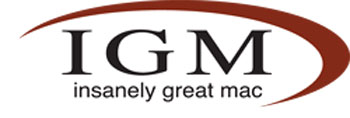Vale, PowerBook (1991-2006)
May 23rd 2006
A tear-jerking blog at PC World delivers tides of nostalgia for those to whom the PowerBook is more than a fond memory - it's a way of life.
A visit to Apple's PowerBook page now redirects you to the MacBook Pro page. The last hold-out - the 12.1" Mini-Me PowerBook - is now RIP, replaced, effectively, by the 13.3" MacBook.
The first PowerBook, the 100, appeared in 1991, following the satirical Mac Portable, a monstrous 16lb 'portable', proudly delivered under CTO Jean-Louis Gasée's tutelage. It was a relative success due to its Apple logo. It also cost a monstrous $6,000-plus, depending on RAM and other options.
But the 100 took the Portable's innards and transformed them into a sleek grey-black plastic shell; it's a subnotebook by today's standards, A 9.5" black-and-white screen and a novel input device - the trackball, which was also on the Portable.
And the killer feature? SCSI Docking Mode. A PB that could dock seamlessly with your desktop Mac and act as an external hard drive. You could also do Stupid SCSI Tricks with PowerBooks and put the PowerBook at the 'wrong end' of the SCSI chain. Fun, but dangerous if termination wasn't j-u-s-t right.
Revolutionary? You bet. Try a Toshiba of the time (yes, I have). Look at the keyboard. It's a keyboard forward design on the 100. Kareem Abdul Jabar was pictured on a flight in coach in one ad: "Even if he's uncomfortable, his hands are." Yes, palm rests. Like we said, revolutionary. Even Outbound, which manufactured Mac clones, didn't get it and persisted with 'keyboard backward' designs. But Outbound did come up with some cool features and variations on the PowerBook theme.
The next generation - 140, 160 and 180 gave Apple an unrivalled grip on the portable PC market place, consolidated by the active-matrix color 180c and augmented by a new range of subnotebooks, the PowerBook Duo range. All were initially powered by 68030 processor, without an FPU on entry-level models. They were significantly more powerful than the 16MHz 68000-powered 100. RAM capacities rose and so did features and more modern NiCad (instead of lead acid) batteries were employed.
Apple again scaled the heights with the costly but market-leading PowerBook 500 series in 1994. Fuelled by a 68LC040 processor and available in 4 models (5 including the rare Japan-only 550c with full 68040), this PowerBook featured built-in ethernet (a range of flavors; choose your adapter; twin NiMH battery bays; optional PC card cage; B&W, color and both active and passive displays available. No PC notebook could match it. These days - if you can find them - the batteries are horrendously expensive. A few PowerPC upgrades found their way into these machines, and they were still commonly seen into the late 1990s.
Everything that could go wrong went wrong with the first PowerPC PowerBook, the 5300 series (and, to a lesser extent, the 190/cs). LiION batteries - Sony manufactured - caught fire in a couple of shipping versions, but none actually reached customers hands. As Apple fixed the problem with NiMH batteries, no PowerBook were available for months. When they were re-released, the casings and logic board power connectors were often sub-par, and Apple instituted a 7-year repair extension program (REP). This was my first PowerBook. The power connector on the logic board did indeed break, but the 'Book otherwise performed flawlessly - if slowly for years.
The PowerBook's resurgence came with the solid 1400 in 1996, and fortunes continued to improve with the 2400 and 3400. The real speed bump came with the 1997 G3 'Kanga'. With a 250MHz G3 in a 3400 case, it was seriously fast and was the first genuine desktop replacement, a much overused term. But with Kanga it was true.
Then the G3 chips were mounted in the much larger 14.1" Wallstreet G3 PowerBooks, and the form factor remained largely unchanged, only shedding weight with the subsequent Lombard and Pismo G3s. Speeds ranged from 233MHz to 500MHz between 1998 and 2000.
2001 brought us not only the G4, but also the basic look, feel and form factor of the most recent PowerBooks and MacBook Pros. True, the G4 Titanium 'books were rectangular tablets; later models were much more rounded. TiBooks looked great, but dented and scratched too easily and hinges failed.
The most recent PowerBook/MacBook look has its origins in the Aluminium PowerBooks. SuperDrives, backlit keyboards and huge screens (17") became common.
I took delivery last week of the last and best of the PowerBooks - the 17" 1.67GHz PB G4. It's a fitting end to this luxury line of Apple portables.
And, for those of you who want to wallow in the nostalgia, model-by-model, my now-ancient PowerBooks site is still live, although it finishes around 2001. Happily, the PowerBook itself outlasted the site by a comfortable margin.
